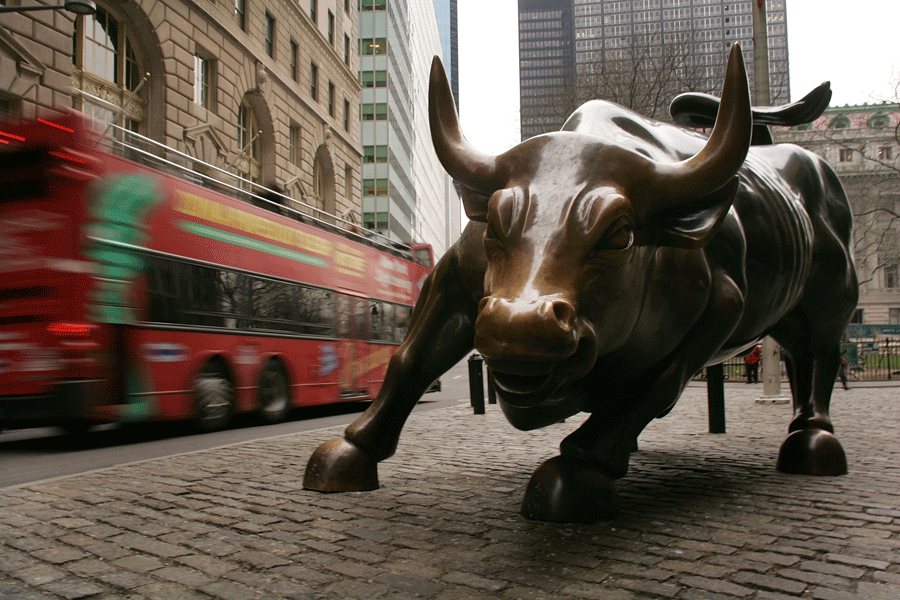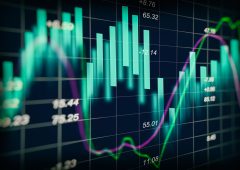Wall Street Tensions Mount Over Fed Rate Cut Predictions
17.07.2024 10:00 2 min. read Alexander Stefanov
Wall Street is increasingly frustrated with the Federal Reserve's interest rate strategy, highlighted by Bank of America's recent results.
The bank’s management anticipates the Fed will cut rates by a quarter point in September, November, and December. However, their chief economist, Michael Gapen, expects just one 25-basis-point cut in December, though he now sees potential for an earlier cut after June’s lower inflation data.
Market expectations have shifted, with derivative contracts indicating two rate cuts starting in September and a 50% chance of a third cut by year-end. This reflects wider uncertainty, as economists advising clients often have different views from their management. Gapen’s outlook is one of the more conservative among major U.S. banks.
Previously, a single quarter-point cut by December was a common forecast, but Barclays, BNP Paribas, Deutsche Bank, and JPMorgan have adjusted their expectations to match market sentiment more closely. Traders are now almost certain the Fed will cut rates by September. The CME FedWatch tool shows a 93.3% probability that the federal funds rate will drop to 5% to 5.25% in September, down from the current 5.25% to 5.50%.
June’s consumer price index update, which showed a 0.1% month-over-month decrease, brought the annual inflation rate to 3%, the lowest in three years. A month ago, the likelihood of a September rate cut was about 70%. This significant change was driven by the favorable inflation data.
Fed Chairman Jerome Powell has indicated that the central bank will act by September. On Monday, Powell stated that the Fed wouldn’t wait for inflation to hit its 2% target before cutting rates, citing the lag effects of previous tightening measures. He emphasized that the Fed seeks greater confidence in inflation returning to 2%, noting recent favorable inflation data as a positive sign.
-
1
Robert Kiyosaki Predicts 2025 “Super-Crash,” Urges Hoarding Gold, Silver, and Bitcoin
23.06.2025 13:31 2 min. read -
2
Billionaire Slams Meme Stock Hype and Sounds Alarm on U.S. Fiscal Health
15.06.2025 18:00 2 min. read -
3
Billionaire Investor Sees Dollar Crash If Key Support Breaks
18.06.2025 15:00 1 min. read -
4
Nassim Taleb Says Global Trust Is Shifting from the Dollar to Gold
22.06.2025 17:00 1 min. read -
5
Geopolitical Shockwaves Hit Ethereum Hard While Bitcoin Stays Resilient
22.06.2025 16:21 1 min. read
Robert Kiyosaki Predicts When The Price of Silver Will Explode
Robert Kiyosaki, author of Rich Dad Poor Dad, has issued a bold prediction on silver, calling it the “best asymmetric buy” currently available.
U.S. PCE Inflation Rises for First Time Since February, Fed Rate Cut Likely Delayed
Fresh data on Personal Consumption Expenditures (PCE) — the Federal Reserve’s preferred inflation gauge — shows inflation ticked higher in May, potentially delaying the long-awaited Fed rate cut into September or later.
Trump Targets Powell as Fed Holds Rates: Who Could Replace Him?
Federal Reserve Chair Jerome Powell is once again under fire, this time facing renewed criticism from Donald Trump over the Fed’s decision to hold interest rates steady in June.
U.S. National Debt Surge Could Trigger a Major Crisis, Says Ray Dalio
Billionaire investor Ray Dalio has sounded the alarm over America’s soaring national debt, warning of a looming economic crisis if no action is taken.
-
1
Robert Kiyosaki Predicts 2025 “Super-Crash,” Urges Hoarding Gold, Silver, and Bitcoin
23.06.2025 13:31 2 min. read -
2
Billionaire Slams Meme Stock Hype and Sounds Alarm on U.S. Fiscal Health
15.06.2025 18:00 2 min. read -
3
Billionaire Investor Sees Dollar Crash If Key Support Breaks
18.06.2025 15:00 1 min. read -
4
Nassim Taleb Says Global Trust Is Shifting from the Dollar to Gold
22.06.2025 17:00 1 min. read -
5
Geopolitical Shockwaves Hit Ethereum Hard While Bitcoin Stays Resilient
22.06.2025 16:21 1 min. read


